About 500 miles driving inland from Lake Macquarie to reach a country within a country. Once we leave the world as we know it behind we cross green mountains, plains, forests, farmlands and waterholes to notice that the world surrounding us gradually becomes drier, farmland scarcer and towns a very rare occurrence.
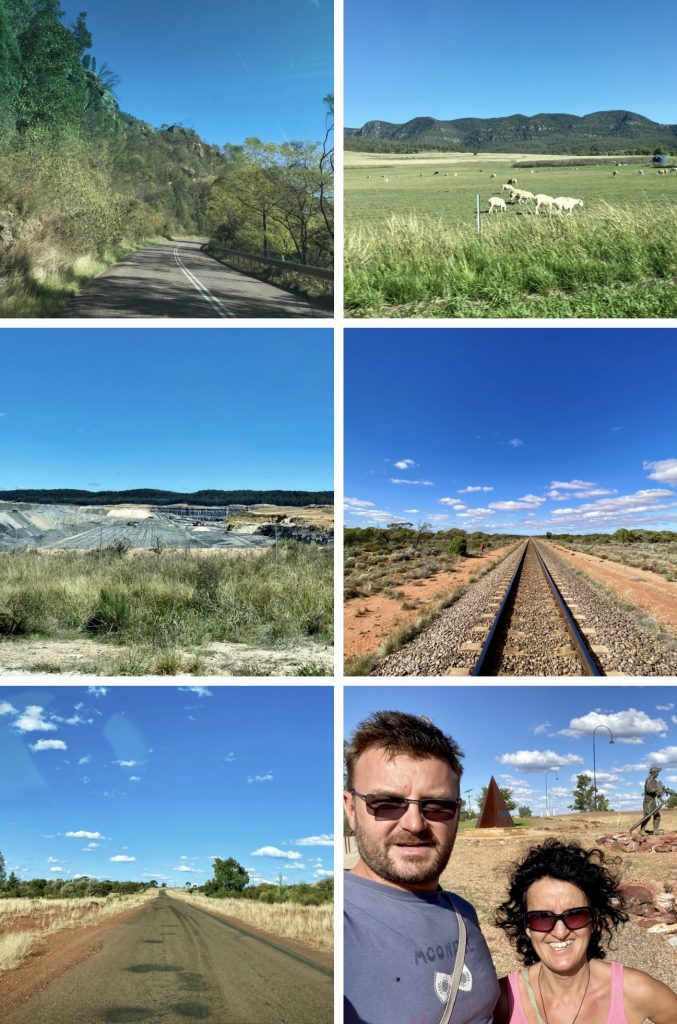
Excitement grows with every mile. We become accustomed with the roadside casualties that are, alas, more and more an integral part of the scenery:- kangaroos, big and small, possums, wombats…feral cats, goats, boars and emus are streetwiser as they don’t seem to become victims of the night drivers. The road side scenery is scarred with mines extracting various ground riches from coal to copper, silver and gold. Rail tracks are accompanying the Golden Highway skipping every so often from left to right and back.
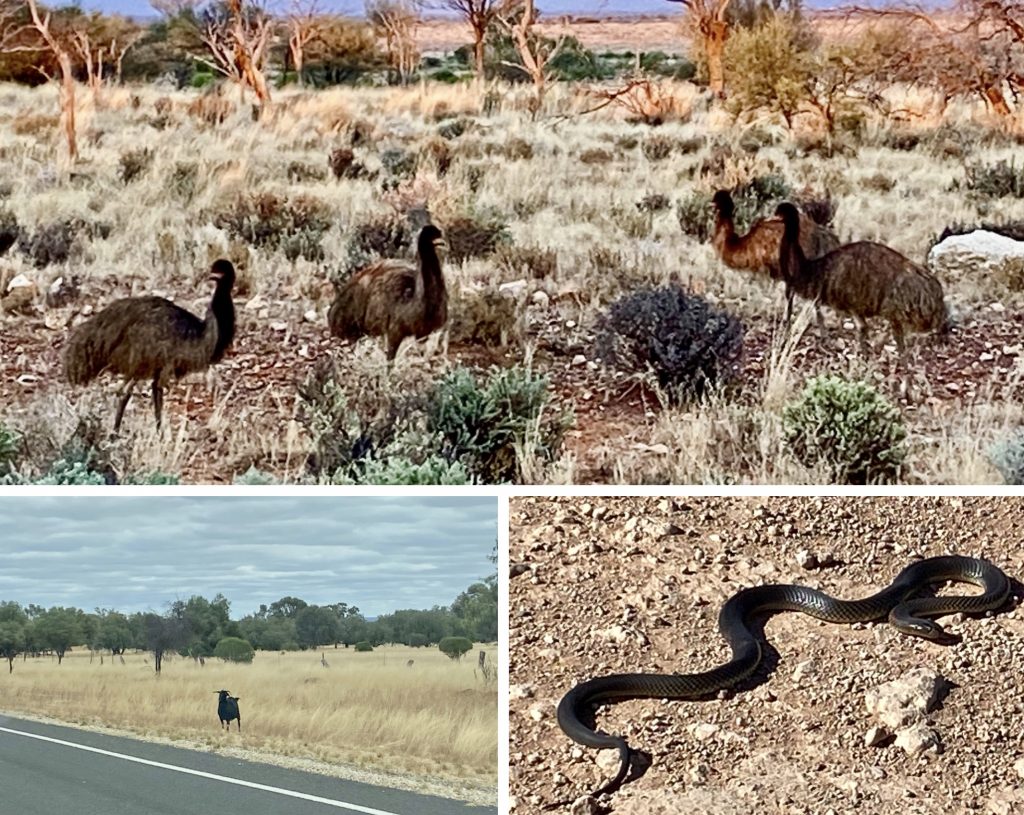
As we reach the never ending plains, the flood warnings pop up with clock work regularity. The flood measuring ruler goes up to two metres. Wow! Cars become scarcer. Road trains more of an occurrence. Emergency phones road signs remind us that we are entering a remote part of the country where our mobiles have no reception. Oh, well…
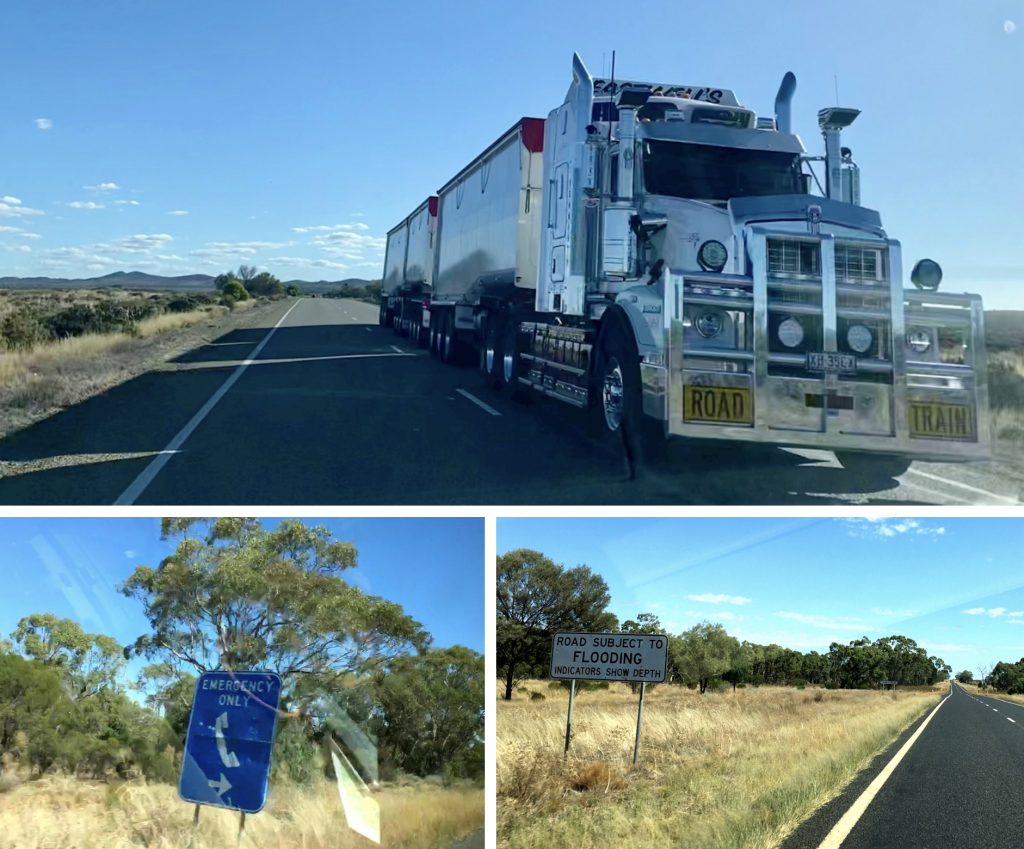
The moment we drive into Cobar township, some 500 miles inland, we knew that we reached the outback. The ground is red, vegetation scarce, people rurally nice.
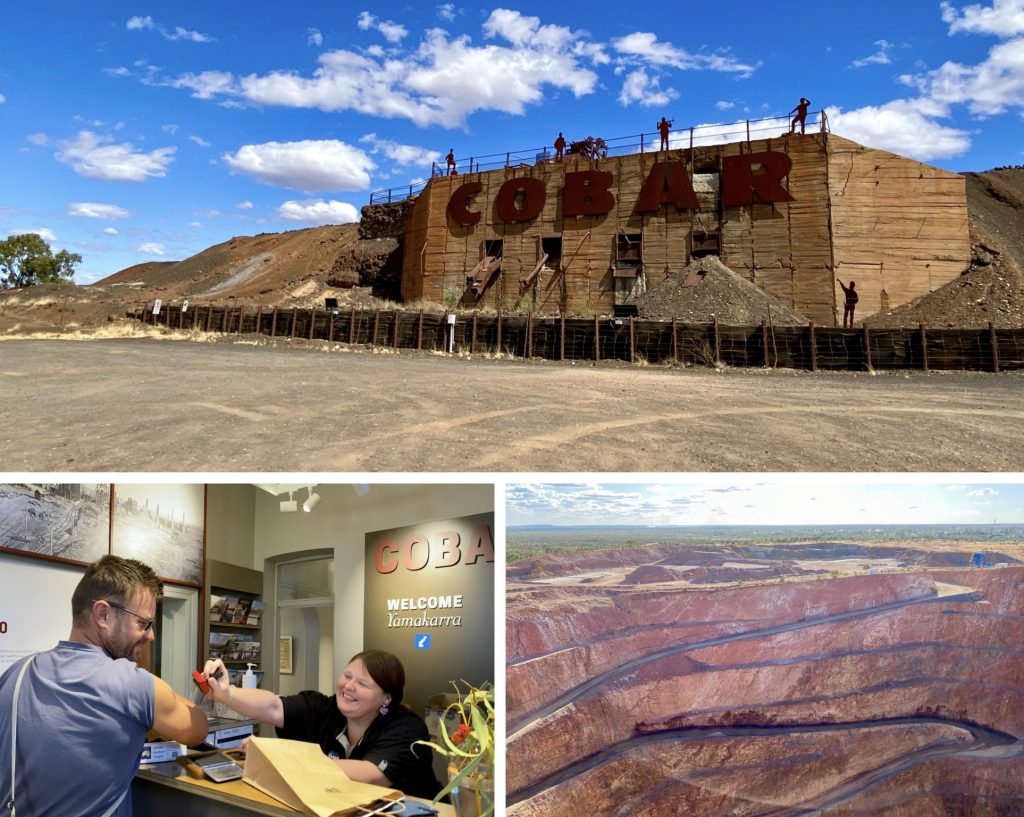
Cobar town is indeed the gateway to the outback. The town has been build after the discovery of copper by a couple of passer-bys who in 1870 were camped by a waterhole. They noticed the unusually red colour of the water.
Presently with a population of under 5,000, Cobar had a population of 15,000 in its boom years. Cobar is synonymous with mining. There is no doubt copper is part of Cobar soul. But Cobar is not just a copper city, it is also a city of gold, silver, zinc and lead.
As we advance through the outback, the horizon expands. An ocean of land. The road splits it in two, cutting through with the precision of a knife cutting through cheese. Farms become stations. Bull dust dresses the road in the longest ball dress ever. Green becomes yellow. Trees become shrubs. Rivers become dry creeks.

We make a 80 km detour north from the Golden Highway to experience the unique outback settlement of White Cliffs, a vivid expression of the true outback, both harsh and glorious.
This is one of the few settlements in Australia where living is mostly underground. Dugouts, with their fans ventilation system, range in temperature between 16 and 26 degree, which allows the scarce residents to live comfortably when the outside temperatures vary between 0 to 50 degrees Celsius.
You may wonder why people choose to brave these harsh outback conditions? Opal mining is the answer. White Cliffs is the only place in the world where opal pineapples, opalised wood, shells and fossils can be found. How come? More than 400 million years ago the ground that we stand on today was under the sea.
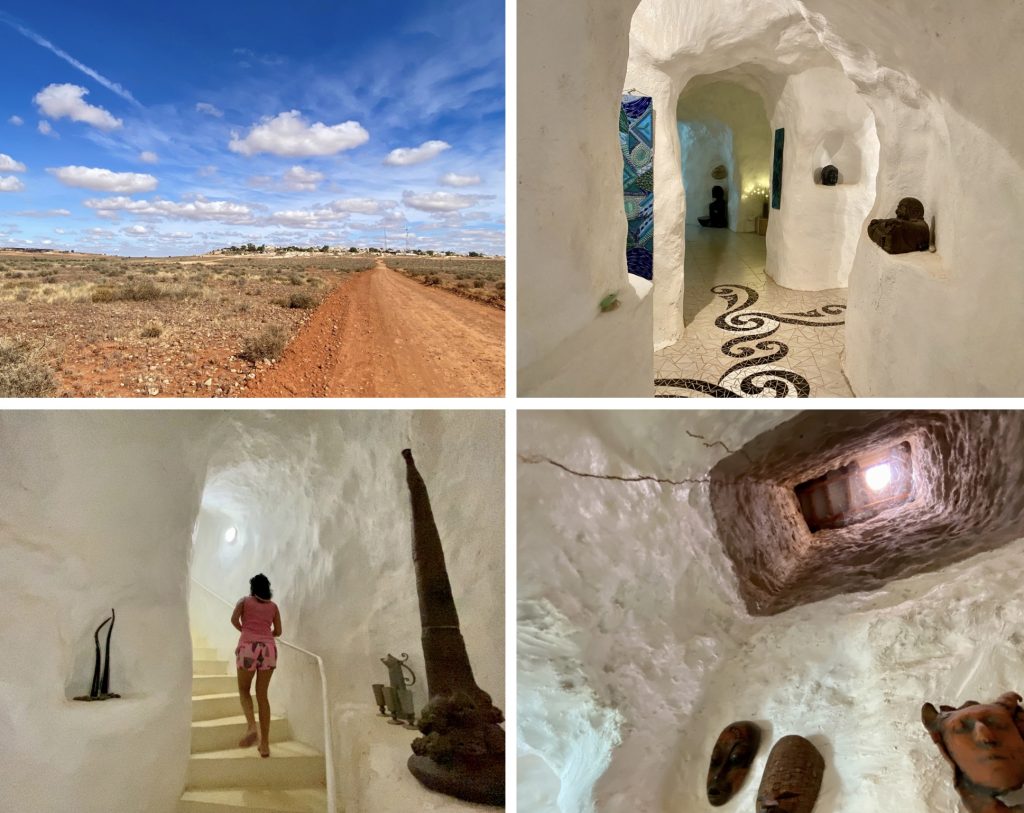
Although dugouts began from mining, no mining is now permitted on the hills hosting the dugouts. Opal mining is contradicting ‘the tread lightly’ aborigines principles, who are recognised as the the traditional owners of the land. Yet, there are still half dozen full time miners in White Cliffs, along with hobby miners arriving for the winter months.
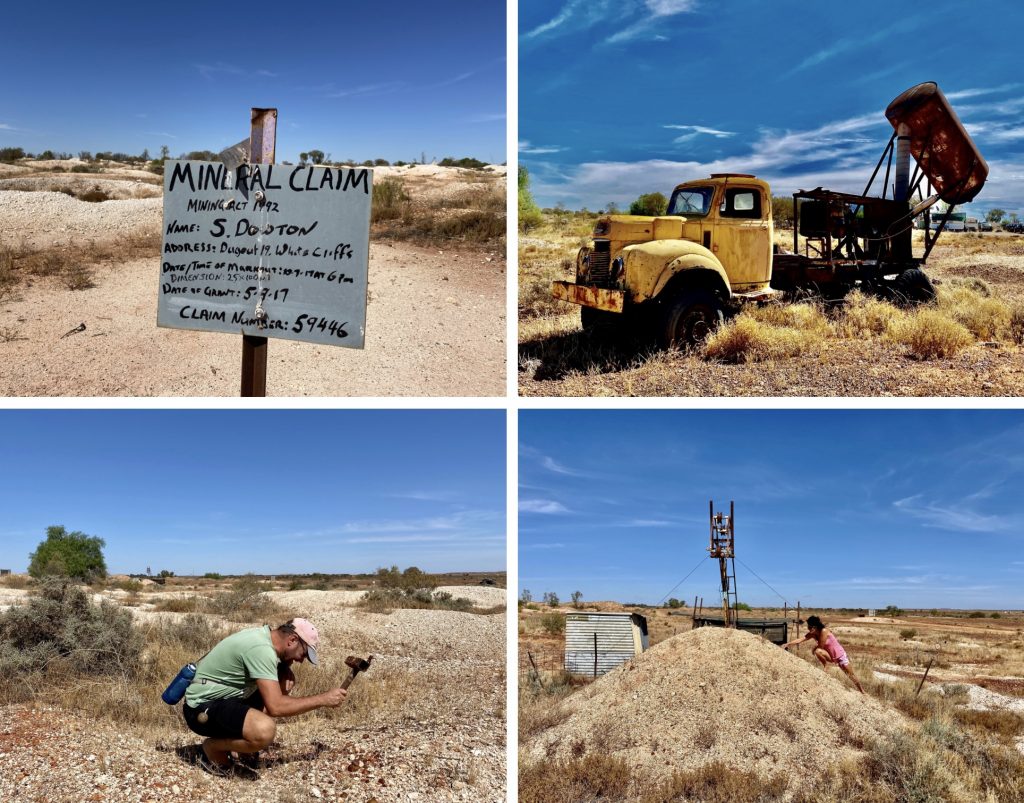
As we are driving towards Silverton we (more Sorin, really!) are excited to visit the Mad Max museum.

